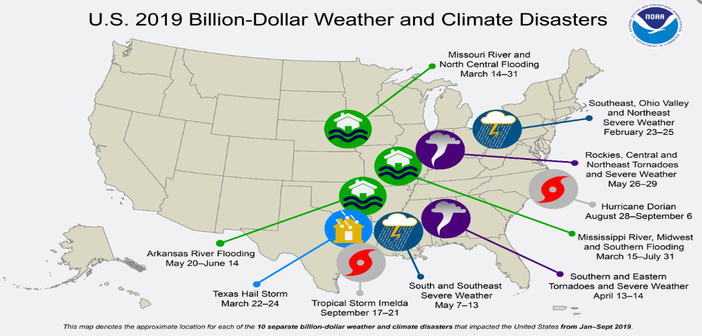Extreme weather has resulted in at least US$10bn-worth of damage to the US in 2019 so far, according to US government statistics. The economic toll of natural disasters in the country was laid out in a report published by NOAA.
According to the report “there have been 10 weather and climate disaster events with losses exceeding US$1bn each across the United States” since the start of the year.
These events included three major floods, five severe storm events and two tropical cyclones – Hurricane Dorian and Tropical Storm Imelda. As well as their economic impact, these natural disasters accounted for the deaths of 39 people, according to NOAA.
Although the impact of Dorian was most destructive in the Bahamas, storm surge damage on the South Carolina coast resulting from the hurricane, coupled with damage caused by high winds, pushed the cost of the weather event to over the US$1bn mark.
Most of the economic losses resulting from Imelda, which struck Texas in late September, were due to flooding.
Three other major flooding events also made the list. Respectively, they were a record-breaking deluge that struck the Missouri Valley in March, and flooding along the Mississippi and Arkansas rivers from Spring through Summer.
The NOAA report also noted that record rainfall in 2019 had resulted in the wettest January through September period ever recorded in the US.
The report said that since 1980 the US has suffered 254 weather and climate disasters where the economic losses reached in excess of US$1bn.
Out of those 254 events, 65 have occurred in the past five years, meaning that the rate of such disasters has more than doubled per year in this time span. The increase cannot be explained by inflation because the economic losses were adjusted to take account of inflation, according to NOAA.
The NOAA also reported that unusually high temperatures in September made it the joint second highest September ever recorded in the country.



